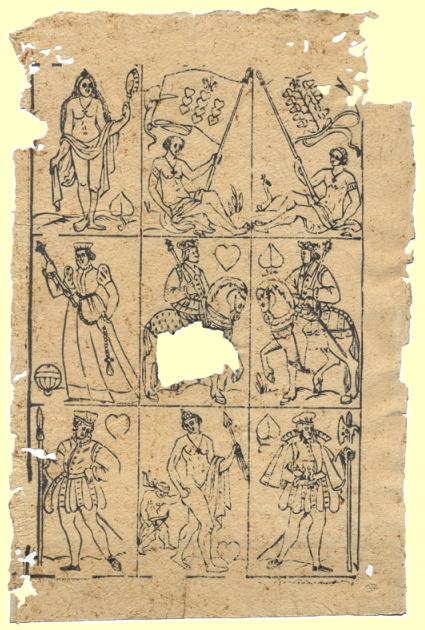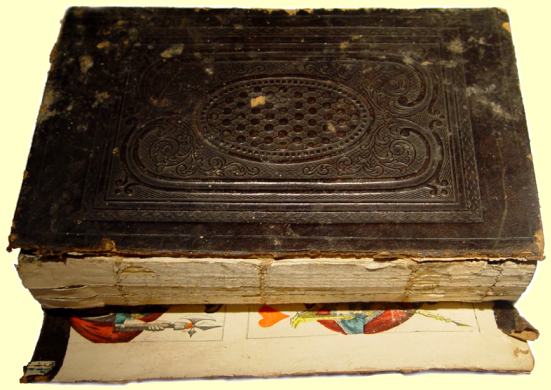
****************
# 10
How saving money resulted in saving playing cards.
In the old days bookbinders probably did not make a fortune with their work. To produce the highest quality bindings they used the finest leather and real gold dust. On the other hand they had to keep the cost low, so in the interior of the luxurious book bindings we find old paper from damaged books, parts of newspapers, all kind of manuscripts and other paper waste like... uncut sheets of playing cards. Thank you bookbinders! During restoration antique books have revealed many beautiful sheets of playing cards, from very early makers. Cards we would never have seen if they were not used to fill up and reinforce book bindings. In fact most of the earliest German playing cards were found in book bindings. Secondary use as a way to preserve playing card history.

Bookbinding reinforcement, German, around 1580
Apparently something went wrong in the 16th century printing process of
this sheet of playing cards: the paper shows a nasty hole and spurs of spoiled
ink. If the sheet was put in the waste basket or burned in the fireplace, we
would never have known these type of cards. No cut and finished playing cards of
this rare design with naked figures are found.
Playing card maker unknown, probably German. No date,
maybe even earlier than 1580.

Reinforced spine, Belgian, 1816
This is a beautifully bound devotional book entitled ‘Epistles and
Gospels’, but the spine of the book was reinforced by gluing in a strip of
common playing card cardboard. Actually, this is not so strange as it might
seem. People in those days were economical in their use of material, and
misprinted playing cards were quite serviceable for such a purpose. The
situation becomes even more comprehensible when you read the name of the
printer: Brepols and Dierckx, Son in Turnhout, Belgium. This company was also a
famous maker of playing cards: the defects from one department were merely used
by another. If the spine of this book had never been torn loose, we never would
have made this discovery.
Book printer and playing card maker Brepols en Dierckx,
Son, Turnhout, Belgium. Book dated 1816.
Do you have secondary used playing cards in your collection? I would be
delighted to see them. Please email me a scan and description. Thanks!
Gejus
****************